
Plant of the Month December 2023
GENERAL INFORMATION:
Our ancestors, long ago, believed each plant contained a spirit (this belief is still held by some). When the leaves fell, harmful spirits were free to roam around. Evergreens still had their spirits and were protective so people planted these round their dwellings, or used them as barriers at openings (doors, windows, chimneys, etc.)
Arum italicum has large green marbled leaves that persist all winter, springing upright after being flattened by each dump of snow. Obviously it contains a helpful spirit. Perhaps that is why, subconsciously, I grow it by my front door. (Actually, it is so I can see green in winter.)
Synonym: Arum italicum ‘Pictum’, Arum italicum var. pictum, Arum italicum marmoratum.
Common Name: Italian Arum, Italian Lords and Ladies.
Cultivars and species: Arum italicum ssp. albispathum - with dark green leaves, ‘Chui’ green and cream with black spots (Leopard), ‘Idris’ - green specks on cream, Arum italicum ssp. italicum ‘Gold Rush’ - gold marbling, fading to cream, ‘McClements’ - bright white veins, black spots, ‘Winter White’ larger, leaves appearing in September. Many more variants.
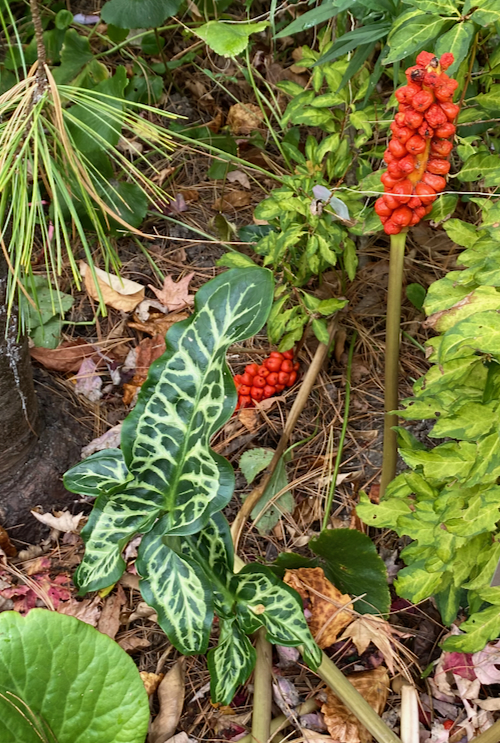
Arum italicum 'Winter White' Mid October.
Life Cycle: Perennial tuber with winter evergreen leaves. Summer dormant.
Height: to 35 cm.
Bloom Time: June.
Leaves: Large 25 cm long, arrow-shaped, shiny dark green leaves, marbled with wide creamy white veins. These start to appear in mid November in Toronto, looking healthy till the end of the following June. The leaves may die in cold exposed areas. More leaves appear in the late winter.
Arum italicum 'Marmoratum' - Nov. Arum italicum 'Marmoratum' - Late Dec.
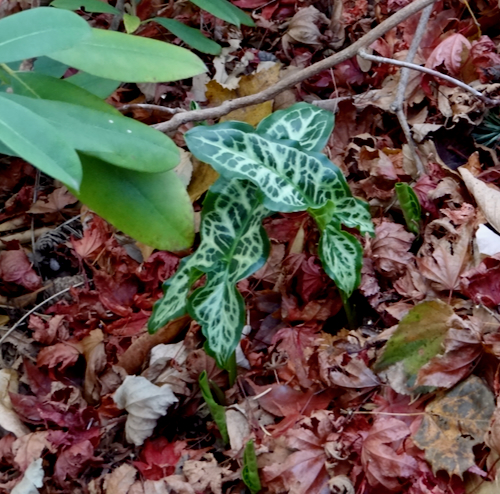
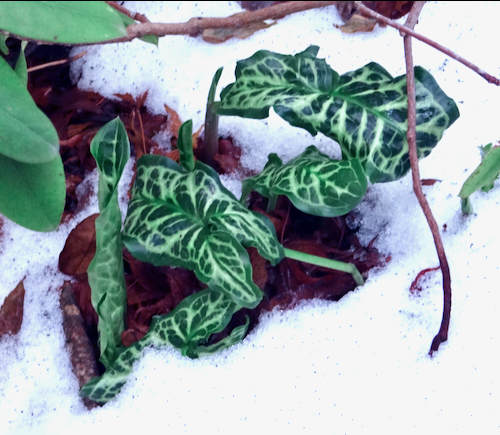
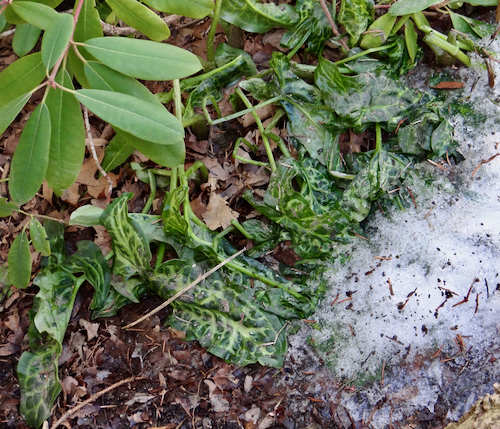
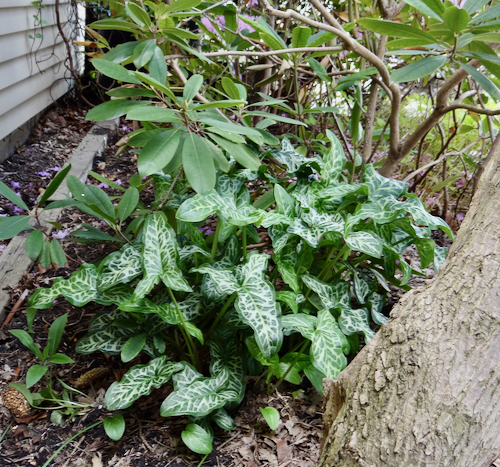
Arum italicum 'Marmoratum' - March. Arum italicum 'Marmoratum' - May.
Flower Colour & Size: Large creamy green spathes with tiny flowers on a yellow spadix.
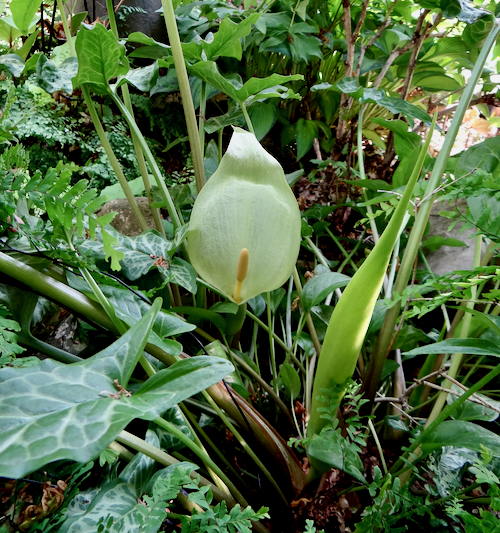
Arum italicum 'Marmoratum' Inflorescence and bud.
Fruit: Attractive spike of reddish orange berries in the fall. Each berry contains several seeds.
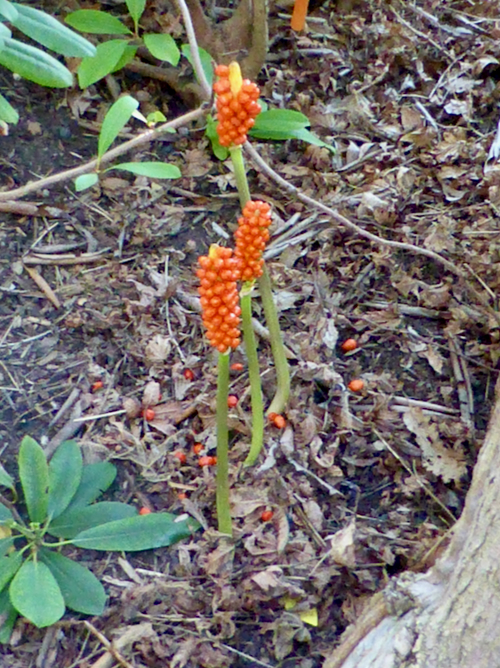
Arum italicum 'Marmoratum' Berries, September.
Range: Native to Mediterranean.
Habitat: Woody areas.
CULTIVATION:
Plant: tubers 10-15 cm deep.
Light: Partial to full shade.
Soil: Most soils, preferably with plenty of organic material.
Water: Moist, well drained, but will tolerate dry soil.
USDA Hardiness: Zones 5-9b.
Companion planting: Other shade garden plants, under shrubs, woodland garden.
Propagation: Divide after flowering and replant. Seeds: Sow immediately outside. Stored seed might be coaxed into germination with temperature cycling and patience. Use repeated cycles of 20°C, then 4°C for 3 months each. Germination is very prolonged. Requires darkness and soaking. Place in warm water until seeds swell, usually 24-48 hours. Discard water and anyfloating seeds. Store seeds @ 6°C; grow seedlings at cool temperature till true leaf appears.
Problems: Poisonous and can be invasive. Usually pest and disease free.
References:
https://www.rhs.org.uk/plants/92886/arum-italicum-subsp-italicum-marmoratum/details
https://www.missouribotanicalgarden.org/PlantFinder
https://www.pacificbulbsociety.org/pbswiki/index.php/arum
https://www.cotswoldgardenflowers.co.uk/?s=Arum+italicum&asp_
https://onrockgarden.com/index.php/germination-guide
Text and images supplied by Anna Leggatt (Toronto Master Gardener)
